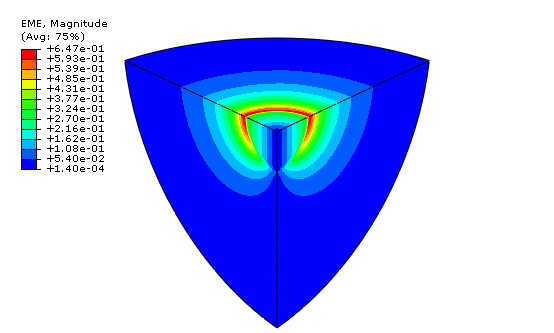Problem description
The problem setup is shown in Figure 1. It depicts a conducting spherical shell immersed in a time-harmonic uniform magnetic field. For visual clarity, the figure depicts a spherical shell with a section of it removed. The inner and outer radius of the conducting spherical shell are m and m. Its conductivity and relative magnetic permeability are assumed to be S/m and . The magnetic flux density is assumed to have a magnitude of T and is oscillating with a frequency of Hz. Without loss of generality, we can assume that the magnetic field is oriented along the -direction. We will assume that the medium in which the spherical shell is immersed has properties similar to that of a vacuum. For these parameters, the skin depth of the conductor is about mm, which is smaller than the shell thickness of mm.



